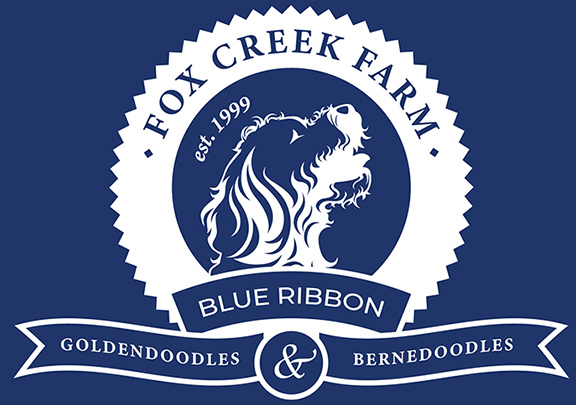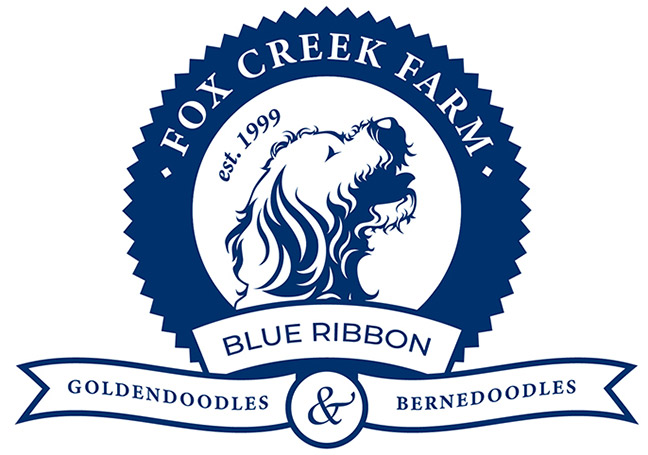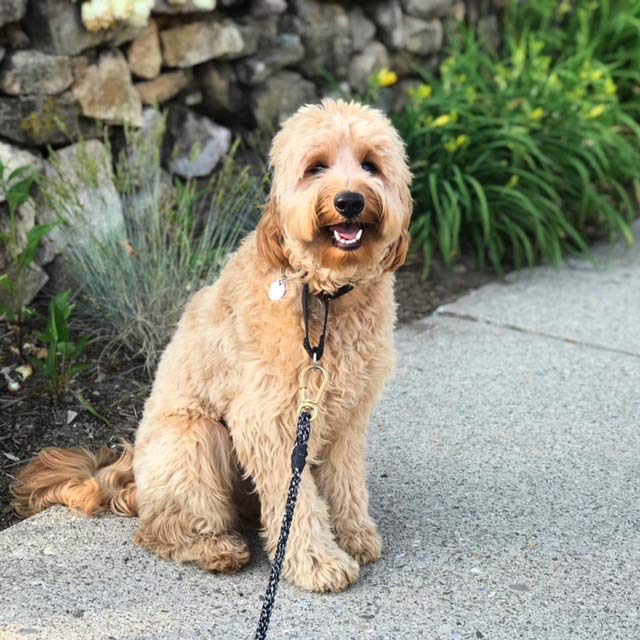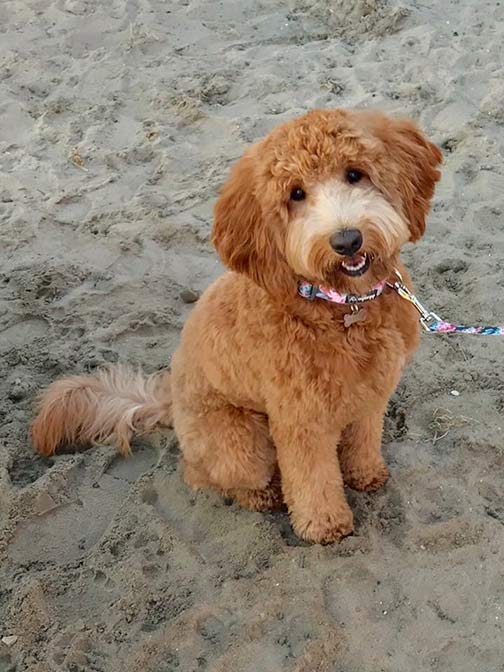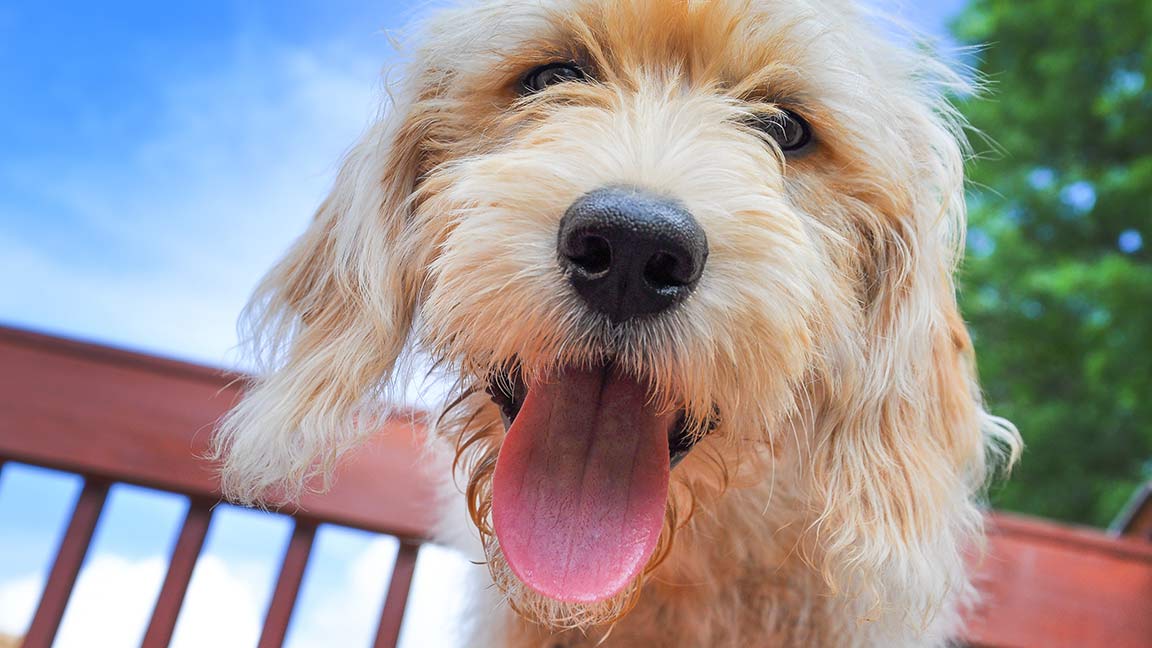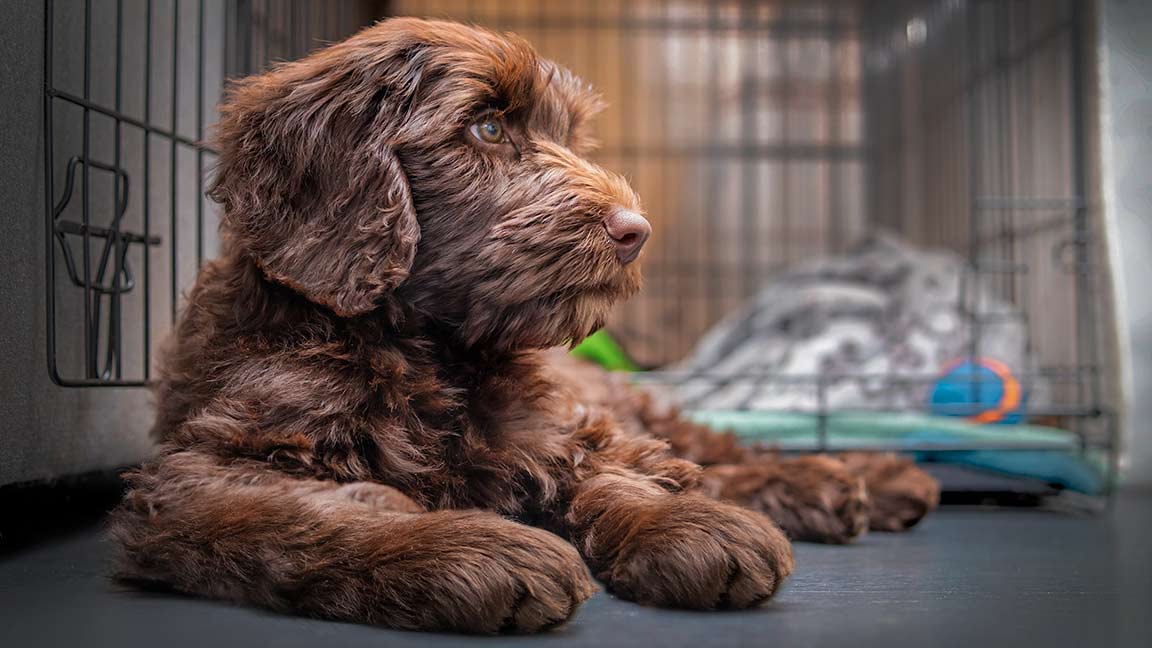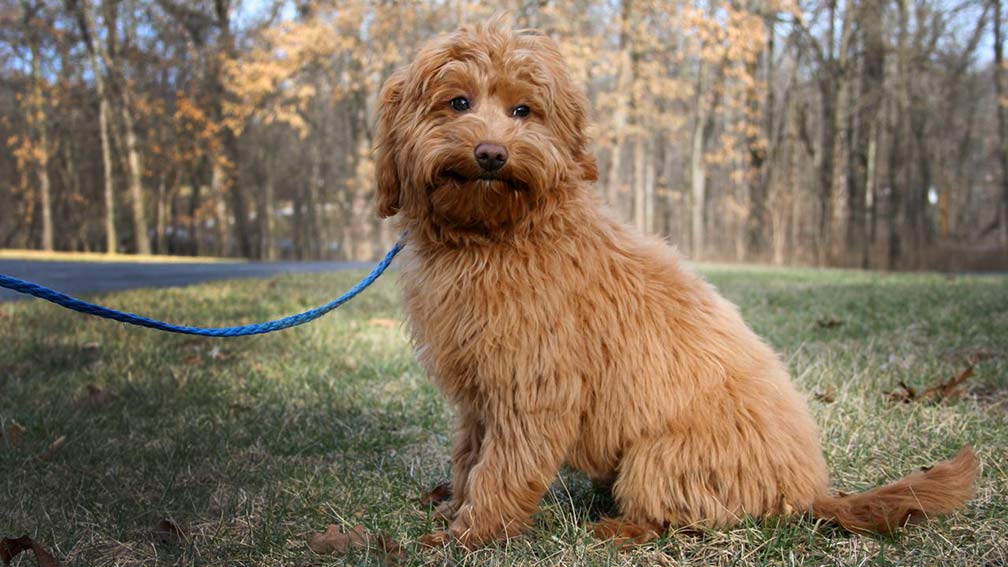
How to Train Your Dog to Walk on a Leash Without Pulling
Dogs really are man’s best friend! But having a best friend means enjoying all activities together without being pulled all over the place. Leash training a puppy is so important as much of a dog’s life outside the home will be spent on a leash. Activities on a leash include potty walks, exercise (for both the dog and the human!), traveling, and meeting and greeting other dogs.
Fox Creek Farms specializes in breeding and training Goldendoodles. While these tips and tricks work great on our Goldendoodles, they are universal for all pups. We encourage dog owners to begin all types of training (including leash and potty training) when your new puppy comes home.
Training your puppy to be comfortable and consistent in walking on a loose leash can take time and patience, but with consistency and dedication, you can teach your puppy to be a good leash walker. Here are a few steps to follow:
Gather the right materials
Before you can start training your puppy to walk on a leash, you need the right leash. This is the most important piece to getting started. While you may have a leash at home, you need to ensure that it is the right fit and length for your dog. If you have a larger dog, a longer leash may be more appropriate, and vice versa for smaller dogs.
Additionally, invest in a leash that is a comfortable and suitable material for you and your dog. Some leashes have rubber handles while others are made of rope. Be sure to purchase a leash with a handle that you can grip easily and plan to use throughout training. Retractable leashes are not recommended during training and should never be used within 30 feet of any roadway.
It would help if you also had a properly fitting harness that remains on your puppy to which to attach the leash. This should fit securely on your dog but not cause discomfort. It is common for a puppy to scratch a bit at a harness until they become used to wearing one. Be sure the harness or collar is the right size and that its material is not bothersome.
Having a certain type of treat and clicker is also crucial in this process. As you will learn, positive reinforcement is a huge part of the process of leash training. Have a good supply of your puppy’s favorite treats on hand to give when they have good behavior. A toy can be substituted here if your puppy prefers to play with a toy. Keep in mind that overfeeding treats is not a good practice, so limit your training time and the number of treats during each session.
Introduce your pup to a leash
First, you have to get your puppy comfortable with the leash. Allow them to sniff and explore the leash. Then, attach it to the harness and allow them to drag it around for a few minutes. This allows your puppy to become more accustomed to how it feels, how heavy it is, and having something attached to its harness.
Following you
Beginning inside, practice walking around and encourage your puppy to follow you. This is best done in a quiet and closed space. Open space may have too many distractions and could delay the training process. The best way to do this is to reward your puppy with treats dispensing from the hand that will eventually hold the leash as they begin to follow you. This step should not be completed with the leash on your puppy’s harness.
Attaching the leash
The next step is to attach the leash to your puppy’s harness and begin training sessions on the leash. You should continue the leash walking around the house with little to no distractions. This serves as a gradual way to get your puppy accustomed to walking with you while attached to a leash. Continue to reward your puppy with a treat or toy as they calmly follow you.
You can also use a clicker to praise your puppy when it behaves well if you are utilizing a clicker for all your behavior training. This will allow your puppy to begin associating good behavior with positive rewards. They will learn to continue this good behavior in hopes of receiving treats, clicks, or toys.
Walking on a loose leash
It is time to head outside! This next step may cause some frustration as it is likely the most difficult step for you and your puppy. Using positive reinforcements is crucial to being successful as you teach your puppy to walk alongside you and practice walking on a leash without pulling. You should begin your walk calmly and continue to reward your puppy when they walk beside you.
When they begin to pull and not obey your pace, do not punish them. Instead, pause where you are and wait for them to calm down or return to your side before continuing. This is one of the most important steps in training dogs to follow your lead. You can say their name to regain their focus back to you and reward them for doing so.
You may also introduce hand signals or begin teaching your puppy verbal commands. In the same way that treats emphasize good behavior, repeating certain commands and directing them to act after you speak will begin to train your dog to associate those commands with certain actions. For instance, repeating the word “heel” as you walk will help your puppy learn the meaning of that command. You may also adapt hand signals in place of words, but it is recommended that you stick with one or the other so as not to confuse the puppy.
Several important commands are important for every dog owner to teach their dog. They make it easier to communicate with your dog and ensure that they are well-behaved while walking on a leash, interacting with other people, or simply playing around. Here is a list of the most important dog commands:
- “Sit”: This is a very basic and important command to teach your puppy. This can be used when a new person is introduced or you need them to remain still. Fox Creek Farm puppies have learned this command before they leave us, but reinforcement will be needed to ensure consistency.
- “Stay”: This command is especially useful when leash training. This is a great way to teach a dog to remain still when approaching a road crossing.
- “Come”: This command is not as essential in leash walking as your dog should always be connected to your leash but this command is especially important when your dog is off leash and you need them to come to you. If he ever slips his collar, you will be grateful you worked on this command!
- “Heel”: This is one of the most important leash training commands. This should be used when requesting your dog to come back to walk at your side. Repeated use of this term is beneficial in leash training.
- “Leave it”: When on your walks, saying “leave it” is a great way to command your dog to leave something alone, whether that is a pinecone in the grass or a piece of litter.
- “Down”: While not particularly important for leash training, responding to the down and stay command can be handy in many situations.
- “Off”: No person or dog likes to be jumped on by an approaching dog, so this is an important command to master quickly. Of course, while on a leash, you have control of your puppy to avoid this behavior.
- “Quiet”: This command is used to teach your puppy to stop barking. This can be important on walks if they begin to excessively bark. It is also a useful command to get your puppy to be quiet when you are on the phone or when answering the door. The quickest way to teach a puppy to be silent is to first teach them to “speak” on command.
Increase distractions
After training in a quieter, less distracting environment, begin practicing in new and different environments. This may include venturing further than your previous route, walking in the opposite direction, or practicing in dog-friendly places like Home Depot.
Introducing your puppy to these new areas is a great way to gradually increase the level of distractions. For example, a dog park will include other dogs and people that may serve as roadblocks and cause dog pulling. This is where you should continue to practice the behaviors as explained in step five.
Remember to be patient
Leash training a puppy takes time and every puppy learns at their own pace. It is important to stay positive, and patient, and remain consistent throughout the process. Remember that punishing your puppy or becoming upset may delay the process significantly. Your puppy will eventually learn to walk on the leash if you are diligent in your practice.
Professional Dog Trainers
Should all else fail, you may consider hiring a dog trainer to complete a training class or a session of classes. Trainers can offer great guidance with additional tips. They can demonstrate proper leash training and correct behavior that needs addressing. Many times, they will be able to point out actions the human is doing that is detrimental to successful training.
Most reputable dog trainers will have a certification or training license from a certification council. Here at Fox Creek Farm, we offer several different types of boarding and puppy training. We have two, four, six, eight, ten, and twelve-week training options. We also have a list of online resources for at-home training!
Leash training a puppy may be a little tedious but having this skill makes walking your puppy a much more enjoyable experience and ensures your puppy is under control and safe. Training your puppy to loose leash walking is so freeing. While it is challenging at first, it is worth the effort.
Being able to leisurely walk with your dog without being pulled will no doubt become a favorite activity for both the dog and the human. This list of tips and steps are a great place to start on your journey to walking with control.
Did you know we can hand deliver Goldendoodle puppies to Virginia, Pennsylvania, New York, Washington, DC, Maryland, and many other states? We go out of our way to offer high-quality health warrantied Goldendoodle puppies for sale to anyone that is within a 5-hour radius of our Goldendoodle nursery.
